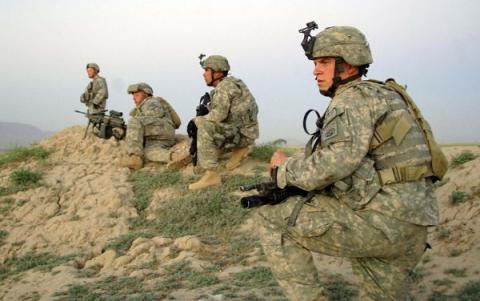As the latest reports about military suicides are released, 2013 is showing that there has been no abatement in the trajectory.
One new report chronicling the April suicides indicated that there were at least eleven potential suicides among active-service members in the Army alone.
Throughout all branches of the military, there have been 161 potential suicides among active-duty, reservists, and National Guardsmen through April. That comes to approximately one suicide every 18 hours.
The rate of suicides causes consternation for many on a holiday when the nation's fallen soldiers are honored and remembered. Many have died in action while others are dying at their own hand.Suicide rates among military personnel have steadily increased during the course of America's wars in the Middle East. No fewer than 2,700 service members have committed suicide since 2001, not including National Guard and reservists.
In 2012, the number of soldier deaths from suicide exceeded those from combat. The number is alternately reported as 349 and 350.
However, a report in the New York Times indicates that the trend is not restricted to soldiers who have served numerous deployments. As much as 80% of the confirmed suicides were not combat veterans. Common factors do include post-traumatic stress syndrome, but also substance abuse, failed relationships, and repeated head injuries.
Dr. Craig Bryan, the associate director of the National Center for Veterans Studies at the University of Utah, simply says, "Any one variable in isolation doesn't explain things."
Cynthia Thompson, a research psychologist at the Naval Health Research Center in San Diego, has said:
"This is probably the keenest misconception the public has: that deployment is the factor most related to the increased rates of suicide."
Despite this, the suicide rate among military personnel is higher than it is in the general population. People are left to wonder why the country's soldiers seem so disproportionately vulnerable to suicide.
Dr. Bryan also authored a recent study connecting military suicides to head injuries and concussions. Bryan questioned 157 recommended personnel who had exhibited concussion-related symptoms. He found that twelve percent of the respondents who suffered at least two concussions had considered suicide. He said, "The likelihood of being suicidal increased dramatically once you had the second head injury."
There exist numerous suicide hotlines available for soldiers to consult to help themselves.
The steady rise in military suicides is an issue that is likely to persist. It could even become a part of the national public health debate because of the presence of substance abuse and head injuries in its victims.
The reports of military suicides is also another instance of bad publicity for the Pentagon and the military establishment. Both are facing scrutiny over reports of sexual assault within the military ranks.
